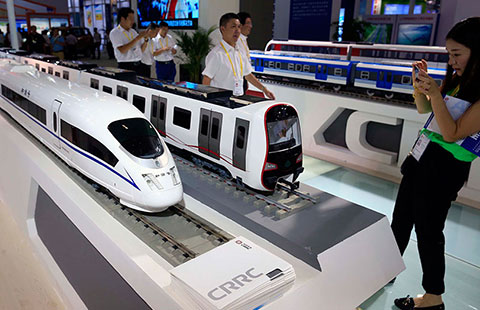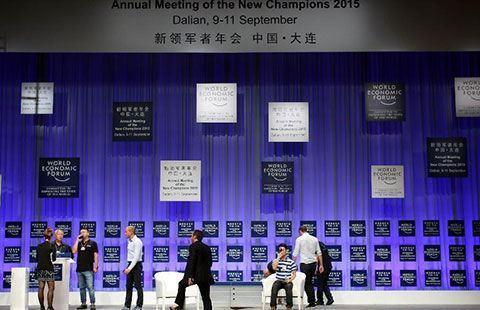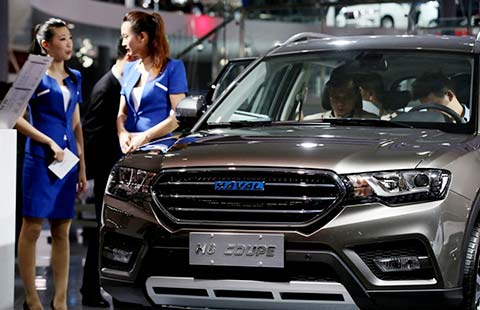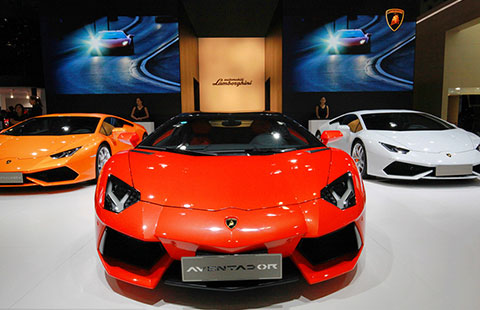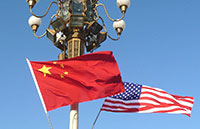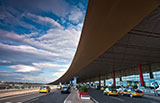Packing the right stuff at the right time
By Zhong Nan (China Daily) Updated: 2015-08-21 08:10
 |
|
Nando Cesarone, president of UPS AsiaPacific Region.[Provided to China Daily] |
When Nando Cesarone started working as a delivery driver for United Parcel Service Inc in Canada 23 years ago, foreign courier companies were yet to expand their wings into China, something that would not happen until 2005.
Sitting in a meeting room at UPS China's headquarters in Shanghai, Cesarone, president of the Asia-Pacific Region for UPS, said the company is poised to grow its investment and resources to improve the carriage of high-tech and high-end consumer products to and from China over the next three years.
With the growth in Chinese demand for high-end consumer and healthcare products, and from e-commerce, UPS, the world's largest package delivery company by revenue, has deployed a multi-hub strategy throughout Asia to ensure that shipments can move rapidly throughout the region and across the world.
The US company has two hubs in China - Shanghai International Hub and Shenzhen Intra-Asia Hub, both of which serve manufacturers located in southern and eastern China with high export volume needs to other regions, and to markets within Asia. The network enables the company to offer money-back guarantees on services for intra-Asia express shipments.
The changing economic dynamics and the reality that global connectivity, innovation and flexibility trump lower costs in China have exerted downward pressure on manufacturing in recent years.
Eager to fulfill the evolving demands of customers in China's quest to move up the manufacturing value chain, UPS launched the China-Europe Full-Container-Load rail service last year in anticipation of rapid growth on the trade route trigged by the Belt and Road Initiative.
UPS expanded its rail product with the Less-than-Container Load option to help companies with smaller shipments, balance supply chain speed and costs.
UPS so far has expanded brand presence in 21 second- and third-tier cities across China and plans to make more service improvements such as time-in-transit, extended pick-up times for export shipments and simplified customs processes in 33 cities where it currently operates.
China has already become one of the biggest markets for cross-border online shopping. It is expected that inbound e-commerce volume will increase from around 600 billion yuan ($93.9 billion) in 2014 to 1 trillion yuan by 2018, data from Hangzhou-based China E-Business Research Center shows.
Singapore-based Cesarone spoke at length to China Daily on the company's strategy for business growth in China. Edited excerpts from the interview:
After UPS launched the China-EU full-container load rail route last June, how do you see yourselves competing with others on the route?
UPS welcomes competition as it compels us to think differently and innovate. We will leverage on our balanced global transportation network, something that we perfected over the last 40 years, and also focus on innovation of our multi-modal products, such as UPS Preferred LCL (Less-than-Container Load) service from Asia and Europe to the US, Mexico and Canada. We are determined to replicate the success of this product in other parts of the world and so we expanded it to a rail service from China to Europe where we have the capabilities to seamlessly integrate rail with our existing Asian and European network.
We couldn't have chosen a better time to launch our multi-modal products as Chinese manufacturers are facing fierce competition and pressure to reduce costs while trying to ensure their end customers' needs are being met. In fact, our "Made in China 2.0" Readiness Index survey suggests that the most successful companies are ones that have optimized their supply chain and gained competitive advantages through logistics.
UPS' China-to-Europe rail service for the FCL is a complementary solution for manufacturers doing business between Asia to Europe. We don't think our customers will completely eliminate the need for air or ocean freight, but rather, they will integrate rail services into their supply chains to save up to 65 percent of costs and 40 percent of time per shipment. Sustainability is another benefit of rail, as it consumes less energy and produces lower carbon emissions compared to air and ocean freight.
The weekly door-to-door service is supported by UPS tracking technology that delivers full visibility and real-time updates regarding shipment progress via both UPS.com and global positioning satellite technology.
What in your opinion is an effective business leadership style for a global company with presence in both China and rest of Asia?
An effective style is the ability to be consistent no matter where you are around the world. I have been fortunate to lead across multiple continents, North America, Europe and now Asia, where diversity is the norm and is respected. The glue that binds us around the world is the uniquely enduring UPS culture. We have guiding principles and policies for all our employees and leaders on how to work together, provide quality services and operate sustainably.
- 2015 China International Fair for Investment and Trade kicks off in Xiamen
- China's commodity imports robust in Jan-Aug period
- China stocks rebound 2.92%
- 2015 China box office already past 2014 total
- China foreign trade decline widens in August
- Interview: JP Morgan's senior executive bullish on China
- Innovation, development the focus for NZ mayors
- Lives of freelancers
